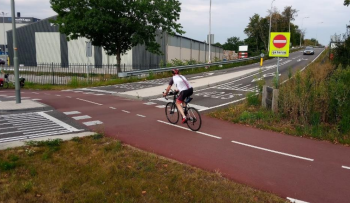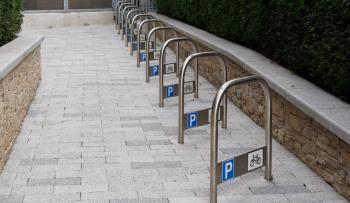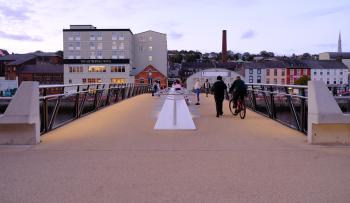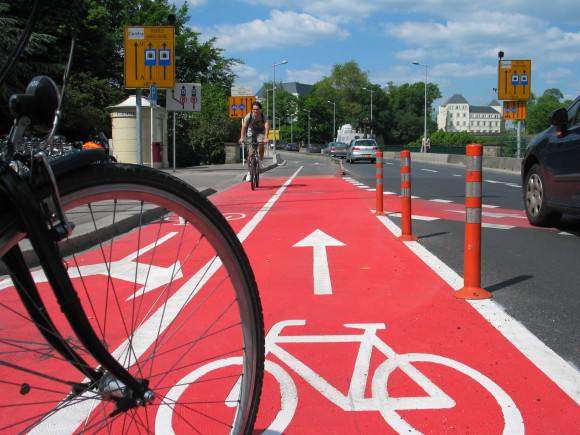
Luxembourg rising star in cycling world?
The Grand Duchy of Luxembourg is putting itself firmly on the cycling map by investing unprecedented amounts of money into the development of cycling. An ECF analysis. Luxembourg Transport Minister, François Bausch, is walking the talk. After he successfully steered through the ‘EU Cycling Summit’ approving the ‘Declaration of Luxembourg on cycling as a climate-friendly mode of transportation’ on October 7, 2015, he later that month went public with his ambitious plans that should give cycling a major boost at home.
What the plan entails
A first law adopted as early as 1999 started the development of a national cycling route network for primarily touristic purposes. An update of that law that was adopted in February 2015 stipulated that a national cycle route network shall be created consisting of 41 routes and totaling eventually 1,400km, up from today’s 613km. These routes aim at promoting cycling as a daily mode of transportation by making, among other, the City of Luxembourg better accessible for commuters, but also by further promoting more touristic routes, such as the EuroVelo 5 that connects London with Brindisi in Italy. By 2018, 753km of cycle routes shall be in place, by 2021 the national cycle route network is expected to include 838km. 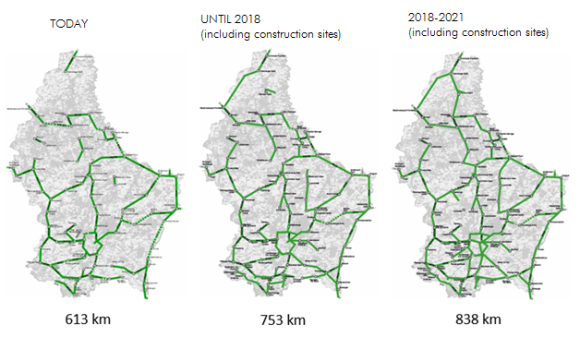
Unprecedented level of national investments in cycling
In order to complete the national cycle route network within the next 10 – 15 years, €8m are being invested annually. Additional funding streams by the national government include projects to provide for cycling on the road network, to further develop cycling tourism, to provide subsidies to local authorities in order to link up local routes to the national network as well as to improve facilities for cyclists at railway stations. All schemes together add up to total investments by national bodies of €11.75m – or €21 per person per capita. Gust Muller, President of ECF member Lëtzebuerger Vëlos-Initiativ, rejoices: “This is the result of many years of our advocacy towards the authorities. Luxembourg has been a laggard in embracing cycling policies, but not anymore.” The scale of this investments by the national government becomes clearer when put into perspective with other countries: The runner up, Denmark, invested about €4.8 per person annually from national sources (average for the period 2009 – 2014); the Netherlands €2.1, Germany €1.15… Research shows that such money is well spent. A report by the British Department for Transport came to the conclusion that the average Benefit-to-Cost Ratio of cycling grants stands at 5.5:1. [That means that for every £1 of public money spent, the funded schemes provide £5.50 worth of social benefit.] Anything higher than 4:1 delivers a ‘Very High Value for Money’, according to the Departments guidance.
‘Cycling in all infrastructure projects’
The mechanism that in any road project, receiving national co-funding, cycling has to be considered from the very start, also ensures that the benefits of investments are maximized. The road agency needs to get the approval of the national cycling officer before the Transport Minister rubberstamps the project. By making this approach in the infrastructure planning process an institutionalized one, it is avoided that cycling becomes an afterthought in road projects.
Outlook
When ECF published its ECF Cycling Barometer for the second time in 2015, Luxembourg already belonged to the handful of countries that made the biggest jump up the ladder compared to the first edition in 2013 (2015: 13; 2013: 19). Yet the Grand Duchy is still a long way behind countries such as the Netherlands or Denmark who started to invest in cycling as early as the mid-1970s. Also, the topographic profile in Luxembourg is more challenging than in those flat countries. A further grow in e-bike sales may somehwat offset this disadvantage in the future (in 2014, about 1,000 e-bikes were sold in Luxembourg). The attractiveness of the Luxembourg labour market to commuters from France, Belgium and Germany that predominantly enter the country by car also add to the challenge. Yet the unprecented level of investments in safe and attractive cycling infrastructure should induce more people to cycle more often, true to the motto „If you build it, they will come“.
Sources
ECF Cycling Barometer 2015: http://ecf.com/ecf-cycling-barometer/ More on the national cycle route network in Luxembourg: http://www.developpement-durable-infrastructures.public.lu/fr/actualites/articles/2015/10/29-travaux-pistes-cyclables/index.html?highlight=r%C3%A9seau 2015 law: Vote de la loi relative au réseau cyclable national et aux raccordements de ce réseau vers les réseaux cyclables communaux http://www.gouvernement.lu/4481082/25-reseau-cyclable 1999 law: Loi réseau national Comparing investments into cycling by the national level: http://ecf.com/cycling-in-all-policies/national-cycling-policies/ Department for Transport, Value for Money Assessment for Cycling Grants, 2014. https://www.gov.uk/government/uploads/system/uploads/attachment_data/file/348943/vfm-assessment-of-cycling-grants.pdf Conebi, European Bicycle market, 2015 edition. http://www.conebi.eu/?page_id=154
Regions:
News category:
Topics:
- Log in to post comments
Contact the author
Recent news!
Contact Us
Avenue des Arts, 7-8
Postal address: Rue de la Charité, 22
1210 Brussels, Belgium

